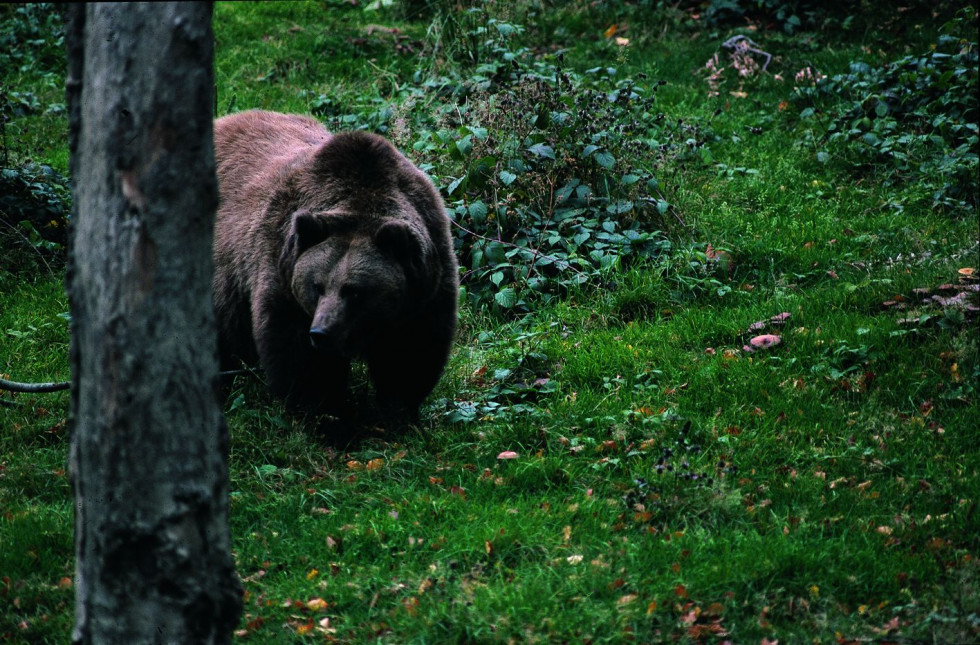Large carnivores
Large carnivores are among the most charismatic of animal species, and for many they are a symbol of unspoilt nature.
In the wild, large carnivores are rarely seen, as they tend to retreat from humans. The lynx is not seen by ordinary visitors to the forests or is seen only exceptionally. The wolf also avoids humans. Encounters with bears are slightly more frequent, and they may end unfortunately, especially when encountering a bear with cubs or if the bear is surprised by the walker or gets angered by a walker’s dog that is not on a leash.
Protected species
In the first half of the 20th century, the bear and the wolf were so endangered as a consequence of hunting and the damage caused to farmers that they were subsequently protected by hunting regulations and nature conservation regulations. The lynx became extinct in Slovenia at the beginning of the 20th century and was reintroduced by hunters in 1973.
The bear, wolf and lynx have been protected by regulations on nature conservation since 1993. Conservation measures have been successful, and the number of bears and wolves in Slovenia is increasing.
The conservation status of the bear and wolf populations in Slovenia is favourable, while the lynx is again threatened with extinction.
How many are there and where do they live?According to expert estimates, there were between 700 and 900 bears in Slovenia, living in an area of just under half of our territory.
Based on a census, experts estimate that there were around 88 wolves in Slovenia in 2018 (including wolves in cross-border packs), of which 75 are found in Slovenia for the most time. They are found mainly in the southwestern part of Slovenia (Kočevsko, Notranjska and Trnovski Gozd).
The number of lynxes is decreasing; it is estimated that there were only 10 to 20 adult animals left in Slovenia in 2018.
All three large carnivores need large areas for their survival in the wild. A bear may walk several tens of kilometres a day and its territory may extend for hundreds of square kilometres. A wolf pack can travel up to 70 km in one night. The lynx’s territory ranges from 100 up to 1,800 km².
The bear and wolf mainly feed on what they can find in the forest, but they may also stray into pastures and nearby villages, to which they are attracted especially by unprotected herds, beehives and refuse.
If large carnivores cause damage although the property was properly protected and the owners followed the principles of good husbandry, the Slovenian Environment Agency pays compensation. The number of annual damage claims has decreased since 2010, as more and more resources and efforts are being invested in preventive measures to protect property and raise people’s awareness on coexistence with large carnivores. In 2017, compensation for damage caused by bears amounted to EUR 222,121.06 and the estimated compensation for damage caused by wolves to EUR 155,324.76.
In Slovenia, we strive to improve the coexistence of people with bears and wolves by introducing preventive measures to prevent damage and to raise awareness of nature visitors. Conflicts between humans and bears and wolves are one of the main threats to the conservation status of large carnivores.
Managing the populations of bear, wolf and lynx requires a different approach for each species. Such an approach must take into account the characteristics of the species, its way of life, the size of the population, and the manner of reproduction and activity.
Bear and wolf management in Slovenia also includes an annual cull, which is determined each year by the Ministry of the Environment and Spatial Planning of the Republic of Slovenia. The culling of lynx is not permitted.


